Charles E W Bean, Diaries, AWM38 3DRL 606/104/1 - March - April 1918 - Part 1
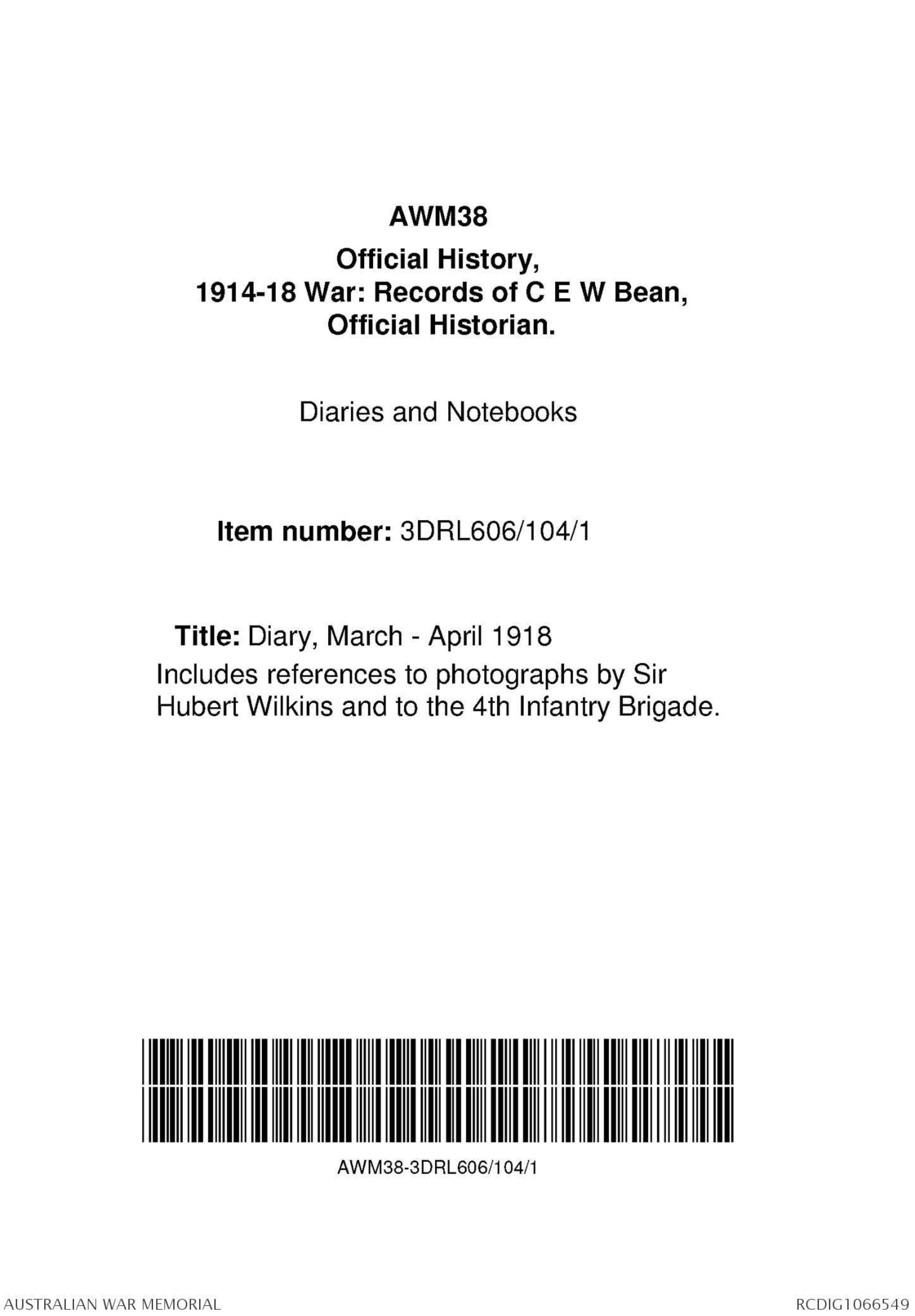

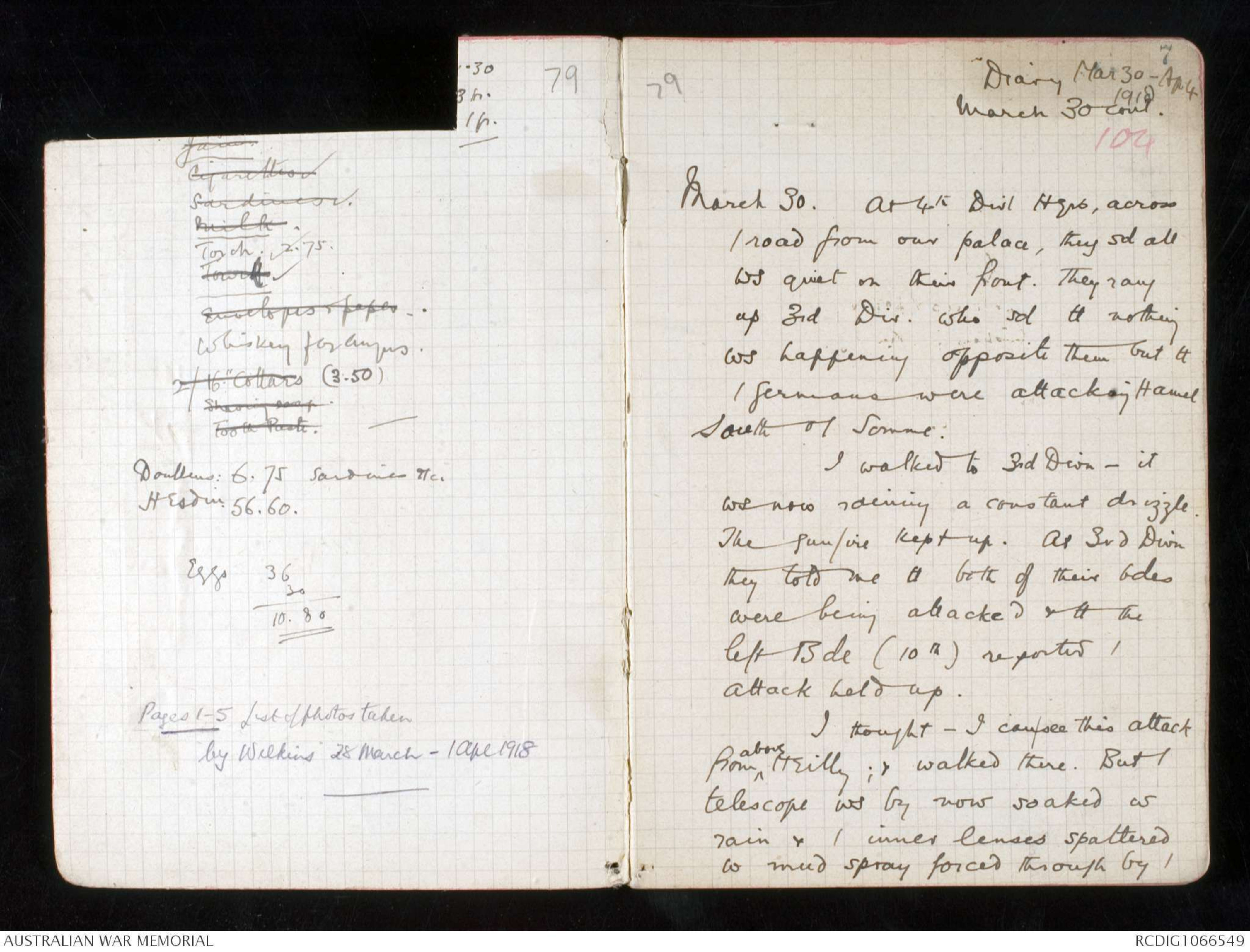

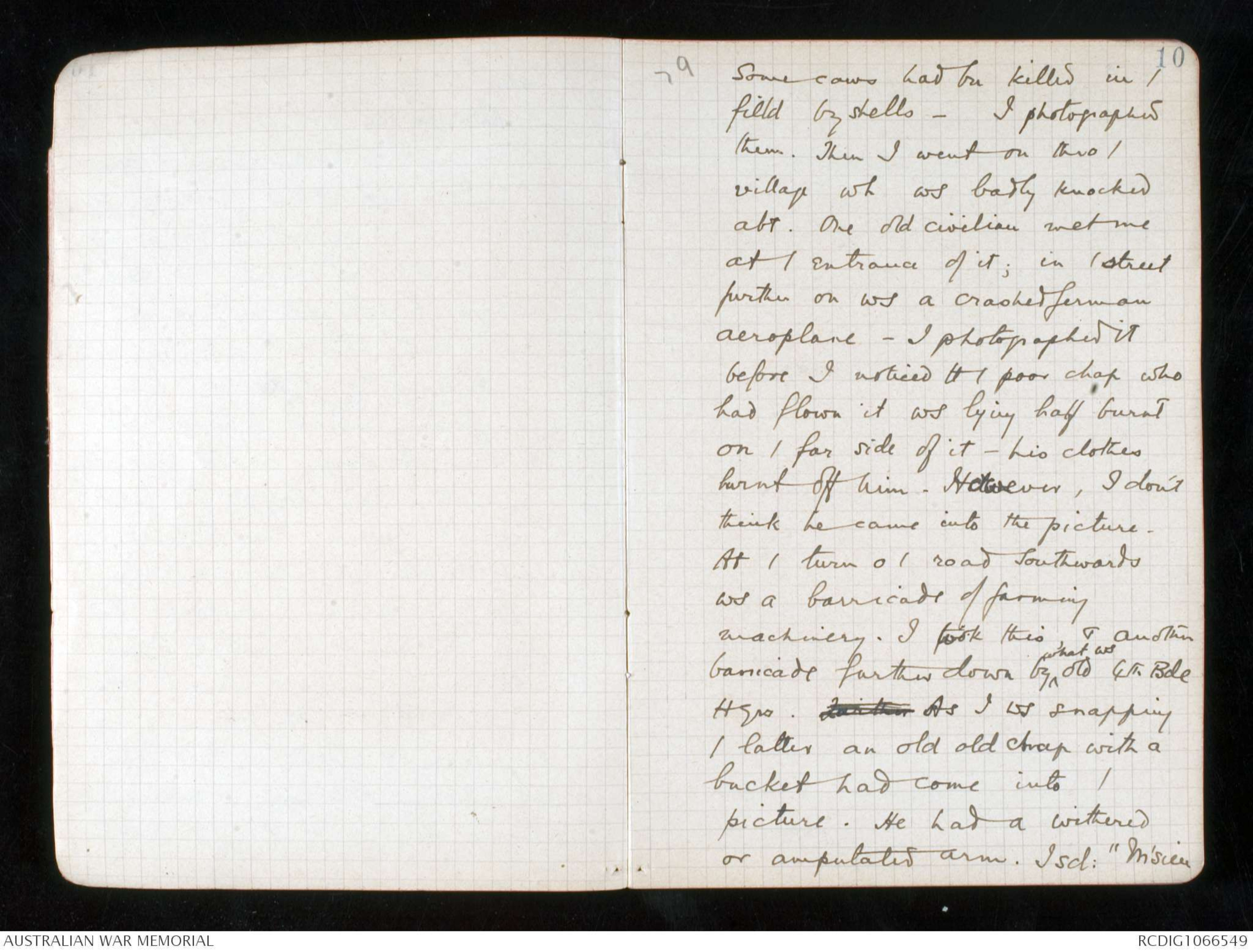
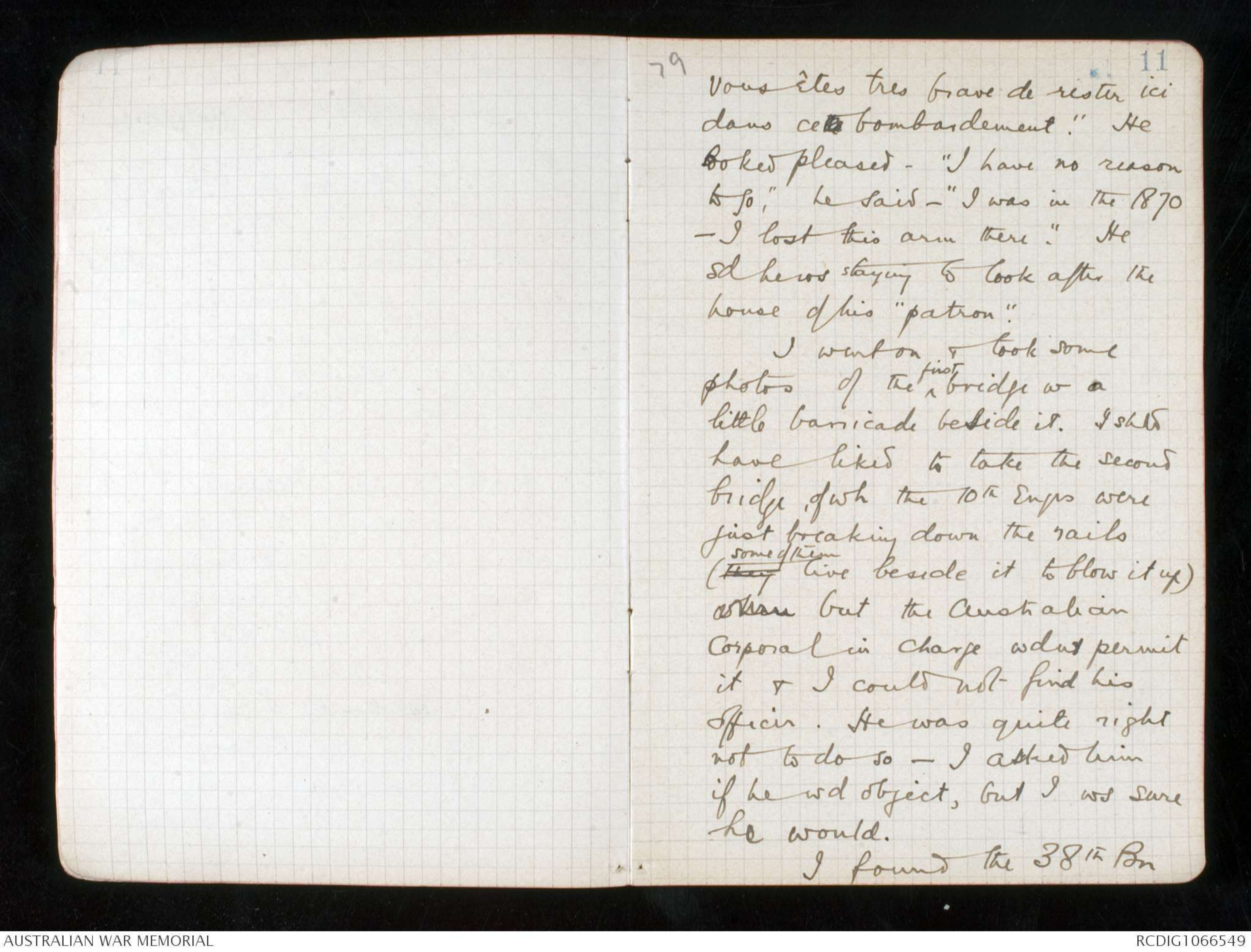
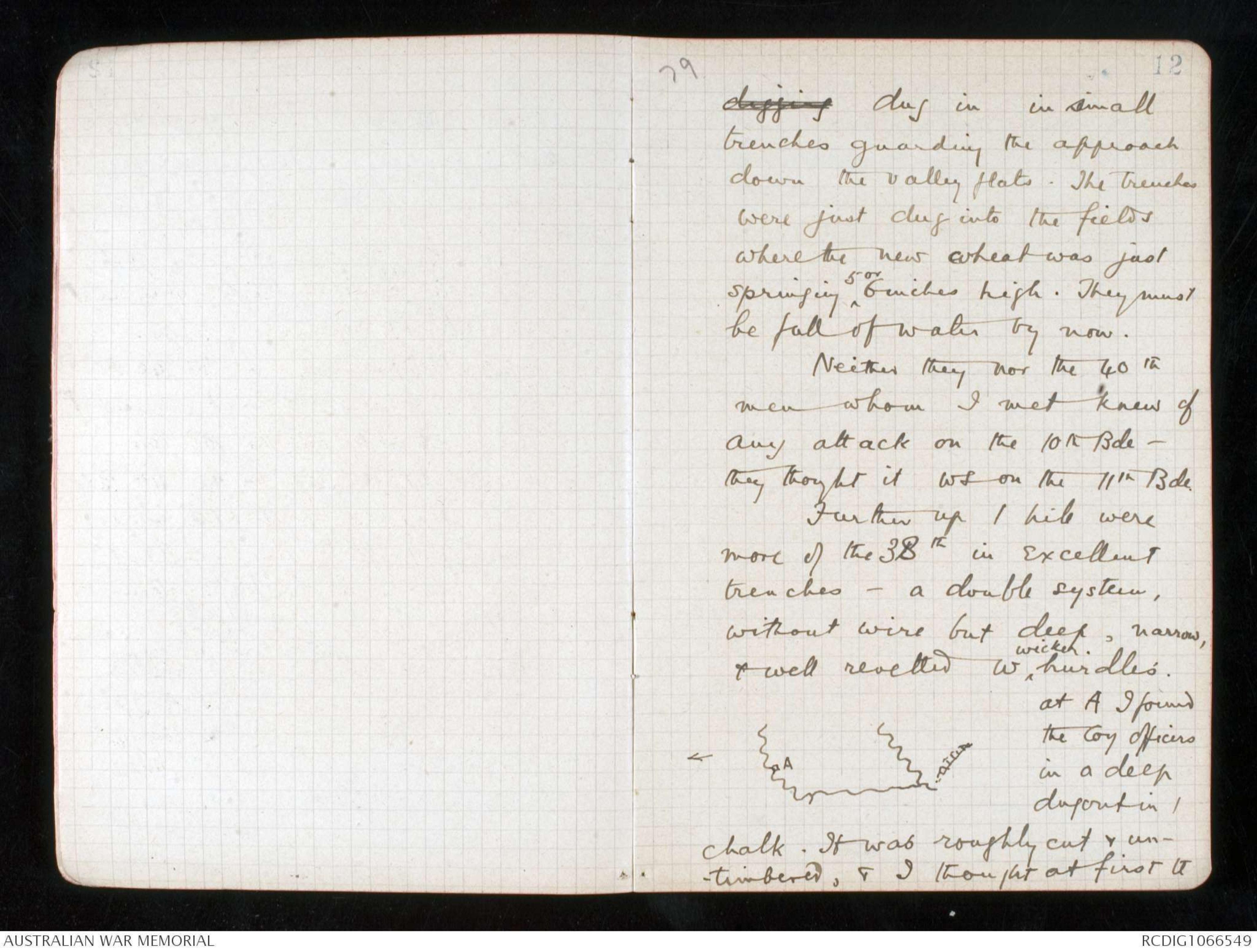
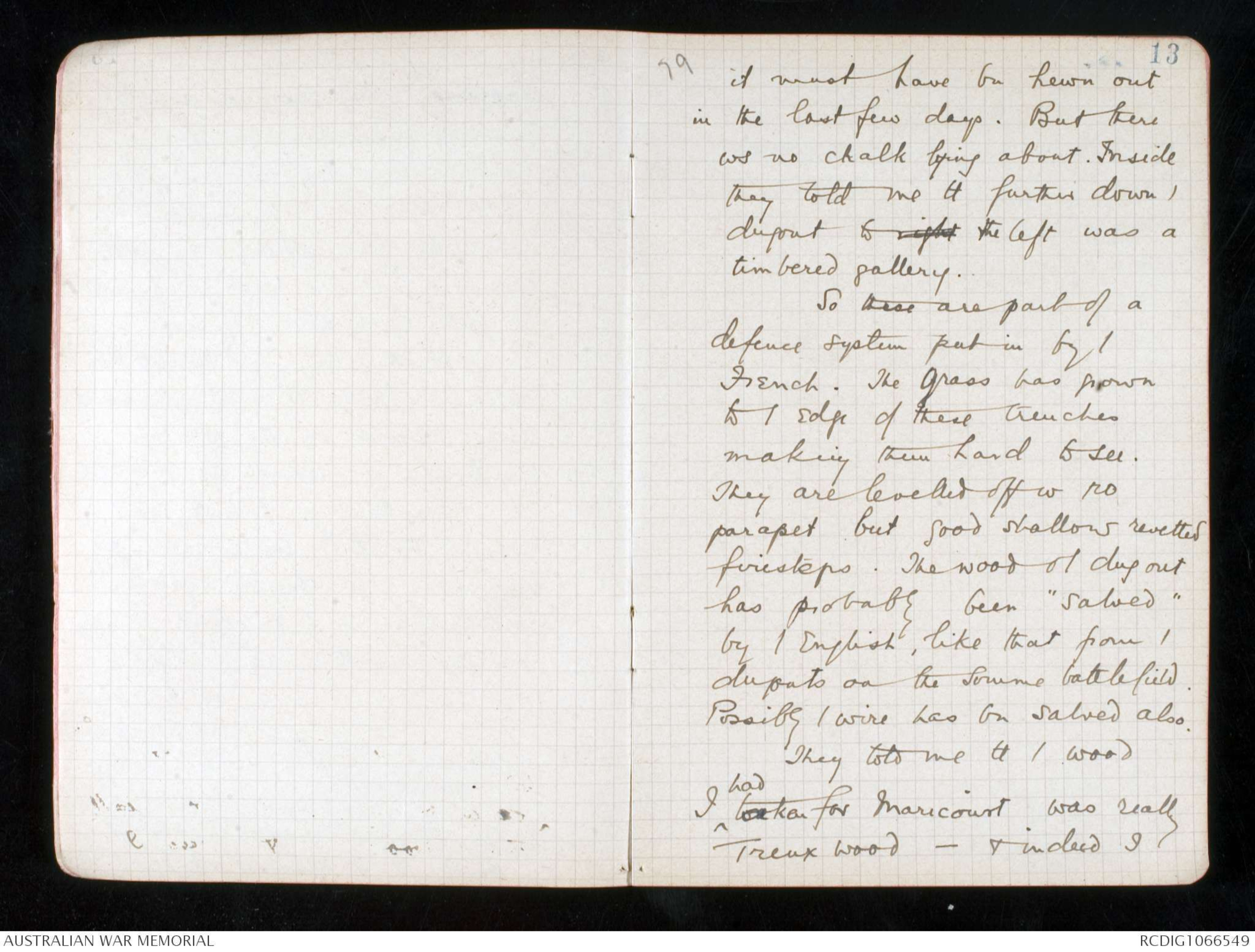

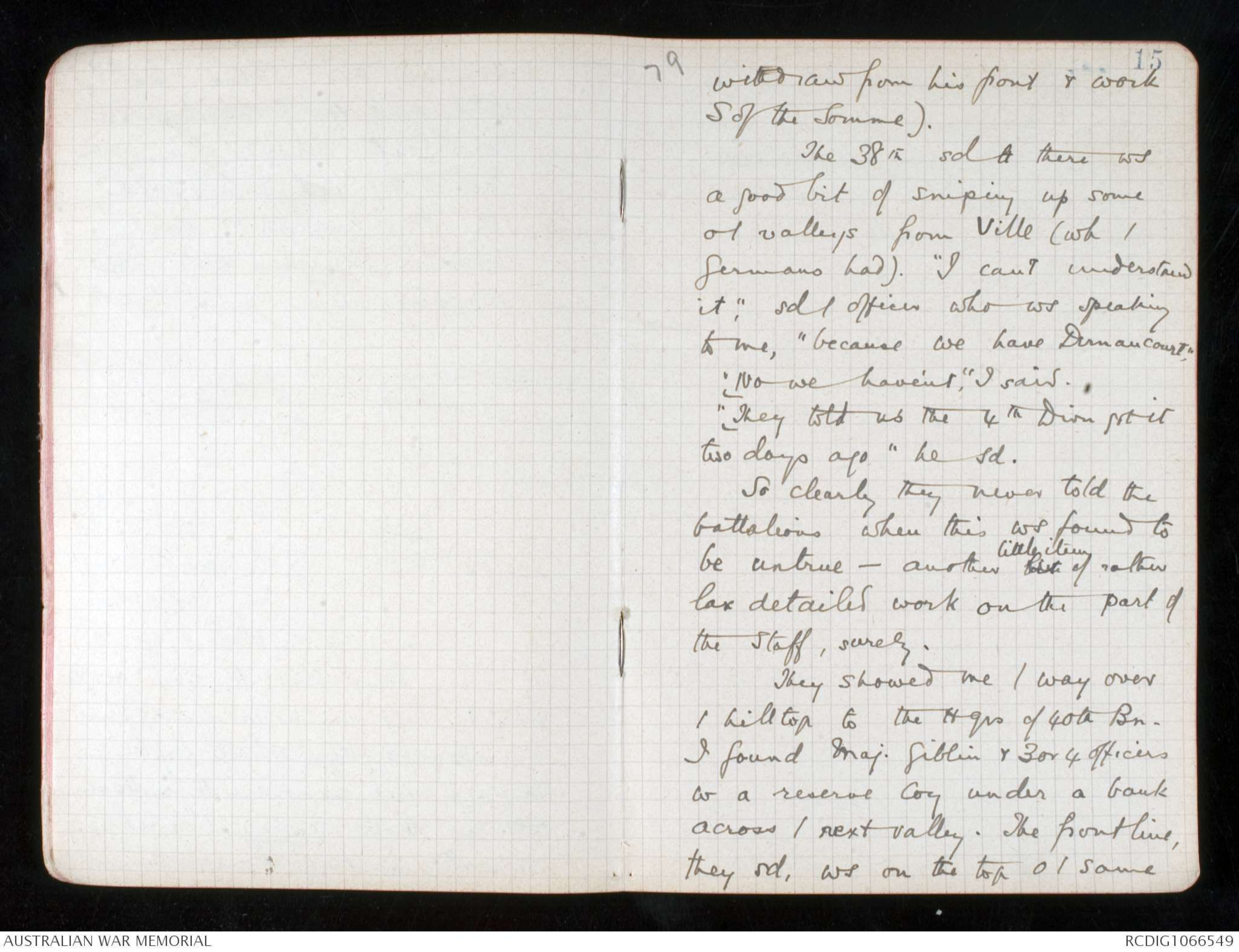
AWM38
Official History,
1914-18 War: Records of C E W Bean,
Official Historian.
Diaries and Notebooks
Item number: 3DRL606/104/1
Title: Diary, March - April 1918
includes references to photographs by Sir
Hubert Wilkins and to the 4th Infantry Brigade.
AWM38-3DRL606/104/1
Original
DIARY No.104
AWM38
3DRL 606 ITEM 104 [1]
DIARIES AND NOTES OF C. E. W. BEAN
CONCERNING THE WAR OF 1914 - 1918
THE use of these diaries and notes is subject to conditions laid down in the terms
of gift to the Australian War Memorial. But, apart from those terms, I wish the
following circumstances and considerations to be brought to the notice of every
reader and writer who may use them.
These writings represent only what at the moment of making them I believed to be
true. The diaries were jotted down almost daily with the object of recording what
was then in the writer’s mind. Often he wrote them when very tired and half asleep;
also, not infrequently, what he believed to be true was not so —but it does not
follow that he always discovered this, or remembered to correct the mistakes when
discovered. Indeed, he could not always remember that he had written them.
These records should, therefore, be used with great caution, as relating only what
their author, at the time of writing, believed. Further, he cannot, of course, vouch
for the accuracy of statements made to him by others and here recorded. But he
did try to ensure such accuracy by consulting, as far as possible, those who had
seen or otherwise taken part in the events. The constant falsity of second-hand
evidence (on which a large proportion of war stories are founded) was impressed
upon him by the second, or third day of the Gallipoli campaign, notwithstanding that
those who passed on such stories usually themselves believed them to be true. All
second-hand evidence herein should be read with this in mind.
16 Sept, 1946. C.E.W. BEAN
AUSTRALIAN WAR MEMORIAL
ACCESS STATUS
OPEN
79
.30
3 h.
1 h.Jam
——Cigarettes ✓.Sardines ✓.Milk.
——
Torch. 2.75Towel ✓
——Envelopes & paper - .
Whiskey for Angus.2/16" collars (3.50)Shaving soap .Tooth Paste. ——
Doullens: 6.75 Sardines etc.
Hesdin. 56.60
Eggs 36
30
——
10.80
====
Pages 1-5 List of photos taken
by Wilkins 28 March - 1 Apr 1918
_____________________________
7
79
Diary Mar 30- Ap 4
1918
March 30 cont.
104
March 30. At 4th Divl Hqrs, across
/ road from our palace, they sd all
ws quiet on their front. They rang
up 3rd Div. who sd tt nothing
ws happening opposite them but tt
/ Germans were attacking Hamel
South o / Somme:
I walked to 3rd Divn - it
ws now raining a constant drizzle.
The gunfire kept up. At 3rd Divn
they told me tt both of their bdes
were being attacked & tt the
left Bde (10th) reported /
attack held up.
I thought – I can/see this attack
from ^above Heilly; & walked there. But /
telescope ws by now soaked w
rain & / inner lenses spattered
w mud spray forced through by /
8
From prisoners captd:-
the 229th R.I.R. of
50th Res. Divn is opposite
4th Divn in Albert, these days.
The 13th I. Regt of the 13th Divn is
at Morlancourt
79
9
air in opening & closing the telescope.
I also began to realise tt our
line must be further forward than
I thought - that I had been taking for
Morlancourt a wood wh ws probably
Maericourt. I walked on towards
Ribemont wh ws quite quiet
tho' / shells had fallen thickly
in & around it two days before.
The German seems to have tried
to scare the troops out of these villages
by shelling them before his line
reached them. Two Victorians
(one boy from Hamilton) were rounding
up / cows in / paddock this
side of / town; & it looked so like /
old country (our old county) tt I
snapped them - The Elderman ws
suspicious & asked me to let him
took at my pay book. An Australian
always does that - if he suspects
you.
79
10
Some cows had bn killed in /
field by shells - I photographed
them. Then I went on thro /
village wh ws badly knocked
abt. One old civilian met me
at / entrance of it; in / street
further on ws a crashed German
aeroplane - I photographed it
before I noticed tt / poor chap who
had flown it ws lying half burnt
on / far side of it - his clothes
burnt off him. However, I don't
think he came into the picture.
At / turn o / road Southwards
ws a barricade of farming
machinery. I took this & another
barricade further down by ^what ws old 4th Bde
Hqrs. Further As I ws snapping
/ latter an old old chap with a
bucket had come into 1
picture. He had a withered
or amputated arm. I sd: "M'sieu
79
11
vous êtes tres brave de rister ici
dans ce te bombardement." He
looked pleased - "I have no reason
to go," he said - "I was in the 1870
- I lost this arm there." He
sd he ws staying to look after the
house of his "patron."
I went on & took some
photos of the ^first bridge w a
little barricade beside it. I shld
have liked to take the second
bridge, of wh the 10th Engrs were
just breaking down the rails
(they some of them live beside it to blow it up)when but the Australian
Corporal in charge wdnt permit
it & I could not find his
officer. He was quite right
not to do so - I asked him
if he wd object, but I ws sure
he would.
I found the 38th Bn
79
12digging dug in in small
trenches guarding the approach
down the valley flats. The trenches
were just dug into the fields
where the new wheat was just
springing ^5 or 6 inches high. They must
be full of water by now.
Neither they nor the 40th
men whom I met knew of
any attack on the 10th Bde -
they thought it ws on the 11th Bde.
Further up / hill were
more of the 38th in excellent
trenches - a double system,
without wire but deep, narrow,
& well revetted w wicker hurdles.
Hand drawn diagram – see original
at A I found
the Coy officers
in a deep
dugout in /
chalk. It was roughly cut & untimbered,
& I thought at first tt
79
13
it must have bn hewn out
in the last few days. But there
ws no chalk lying about. Inside
they told me tt further down /
dugout to right the left was a
timbered gallery.
So these are part of a
defence system put in by /
French. The grass has grown
to / edge of these trenches
making them hard to see.
They are levelled off w no
parapet but good shallow revetted
firesteps. The wood o / dug out
has probably been "salved"
by / English, like that from /
dugouts on the Somme battlefield.
Possibly / wire has bn salved also.
They told me tt / wood
I ^had taken for Maricourt was really
Treux wood - & indeed I
Hand drawn diagram – see original
79
14
realised this. Also they
told me tt / cavalry had
been out ahead of them on
March 27 & had bn holding
the Morlancourt knuckle
where / Germans were now
digging in,
& if only
they had
warned us tt
they were going
to withdraw we cd
have had tt line quite
easily. (Of course we might have
bn attacked there while digging in).
My own impression is tt Gen. Monash
told me tt he asked / cavalry to
clear his front - (I think he meant to
79
15
withdraw from his front & work
S of the Somme).
The 38th sd tt there ws
a good bit of sniping up some
o / valleys from Ville (wh /
Germans had). "I can't understand
it," sd / officer who ws speaking
to me, "because we have Dernancourt."
"No we haven't," I said.
"They told us the 4th Divn got it
two days ago" he sd.
So clearly they never told the
battalions when this ws found to
be untrue - another xxxx little item of rather
lax detailed work on the part of
the Staff, surely.
They showed me / way over
/ hilltop to the Hqrs of 40th Bn.
I found Maj. Giblin & 3 or 4 officers
w a reserve Coy under a bank
across / next valley. The front line,
they sd, on the top o / same
 Loretta Corbett
Loretta CorbettThis transcription item is now locked to you for editing. To release the lock either Save your changes or Cancel.
This lock will be automatically released after 60 minutes of inactivity.